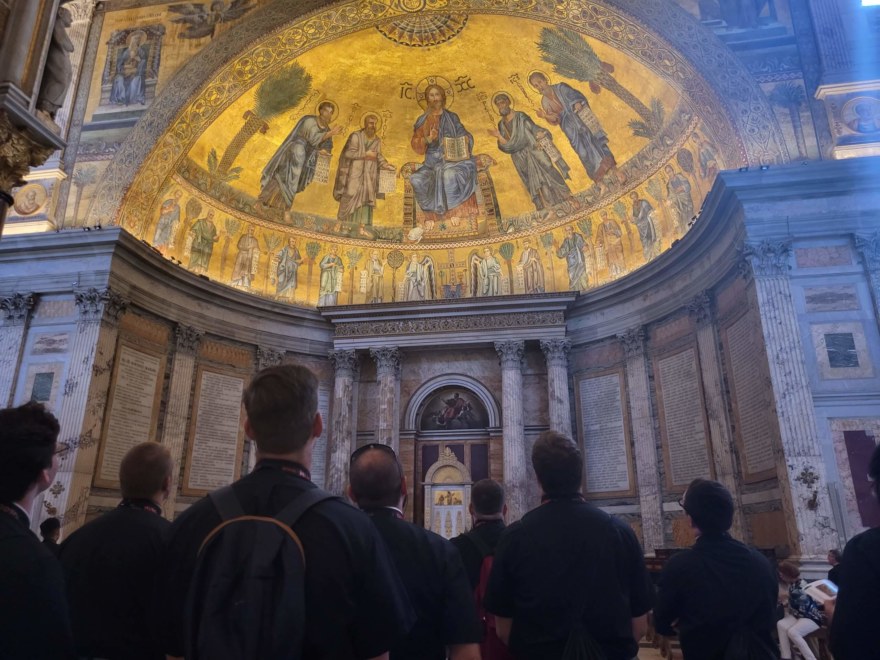Where the Lord Makes His Home | Reflections from Rome 2023
A big highlight of this trip is to see these magnificent churches throughout Italy. Growing up as a Baptist in the suburbs of Dayton, Ohio, I had no idea of the beauty that existed in church buildings. After becoming Catholic in college, I started going to St. Mary’s in Mobile, Alabama. At the time, this 150-year-old stone church was the most stunning building I had ever been in. The building taught the person in the pew about the faith, and everything directed the eye to its main point of worship on the altar. Nine years later, I have seen many more beautiful churches nationwide. Still, we see a whole different level here in Italy. Buildings that today would pass as the grandest of cathedrals were local parish churches to the medieval and early modern Florentines. But why put so much effort into building these monuments?
This year, we celebrated Pentecost together on the program, a feast that predates Christianity. Known in Judaism as the “Festival of Weeks,” we can see the establishment of this holiday in both Exodus and Leviticus. It celebrates the establishment of the covenant on Mt. Sinai, where, after 50 days of fleeing the Egyptians, the ancient Israelites go to worship God. There, God descends onto the mountain, leading to flashing lightning and an earthquake. God makes his presence known to the Israelite people. Amazingly, God’s presence then occupies the tabernacle upon its completion and resides with the Israelites as they prepare their journey through the desert. A similar phenomenon happens in 1 Kings 8 when, after Solomon completes the temple, a cloud again descends and fills the house of the Lord. We see that Pentecost is all about the dwelling place of God, God making a home for himself among his people. This same theme is taken up again all through the book of Ezekiel, where the prophet sees the glory of the Lord enter the mystical temple, but he also sees its departure. It is after he sees this departure that he prophesies about a new covenant that the Lord will make with his people, granting them new hearts. In the end, after seeing much tribulation, Ezekiel again sees the Lord’s glory entering the eschatological temple.
After the destruction of Solomon’s temple, we do not see this imagery again until the figure of Mary. In Luke’s Gospel, the angel Gabriel tells her, “The Holy Spirit will come upon you, and the power of the Most High will overshadow you” (Lk 1:35). It has long been the tradition of the Church to see Mary as the new tabernacle, for she becomes the dwelling place of God! When she heard these words, she understood the implications. So, if Mary is the new tabernacle, a dwelling place for God, but still a temporary one, what is the new temple? In Luke’s Gospel, the overshadowing also occurs during the Transfiguration, when Jesus’s full glory manifests to the disciples. Jesus is God, and therefore his body is the dwelling place of God. But Luke takes this another step forward, for we know that the body of Christ is not just his physical body on earth, but the Church itself! The Acts of the Apostles (also authored by Luke) tells the story of the Christian origin of Pentecost, when the Holy Spirit descends “like the rush of a mighty wind, and it filled all the house where [the disciples] were sitting. And there appeared to them tongues as of fire, distributed and resting on each one of them. And they were all filled with the Holy Spirit and began to speak in other tongues, as the Spirit gave them utterance” (Acts 2:2-4). The Church is the new temple, for God dwells in their very hearts! But what does all this have to do with the church buildings?
The early Christians recognized all of this, so when they began building churches, they did not mimic the model of the ancient pagan temples, usually only big enough for a priest and a few worshippers at a time. Instead, they modeled churches off the ancient Roman basilicas, which were multi-functioned buildings with the primary purpose of being able to host most of the city. The early Christians recognized that the Church was not the Church unless it was worshipping together as a unified body. This is why we see St. Paul admonishing the Corinthians for partaking in the breaking of the bread without the whole community. These church buildings, then, remind the people of their identity as members of the Church, dwelling places of God. In these spaces, the Lord works to prepare them for his presence. Here, God’s people receive the sacraments, such as Baptism, when God first comes into a person’s soul, and the Eucharist, where Jesus comes in his body, blood, soul, and divinity to feed and nourish his people. It is where the people come to conform to Christ, open themselves up to him, and accept his loving presence. And it is where the Church acts as a unified body, where they worship and receive Christ together, so they can go out and be Christ to the world.
So why do we make these buildings so beautiful? Because they are where we come to know Christ, to live in his presence, and to prepare ourselves for him to dwell in us. Pentecost makes this mystery a reality, reminding us that God has made his dwelling in us! This has been God’s plan since he walked with Adam and Eve in the cool of the evening. He wants to make your heart and my heart his permanent home. Open yourself to his call and allow the Lord to enter.
Zachary Jarrell
Archdiocese of Cincinnati


